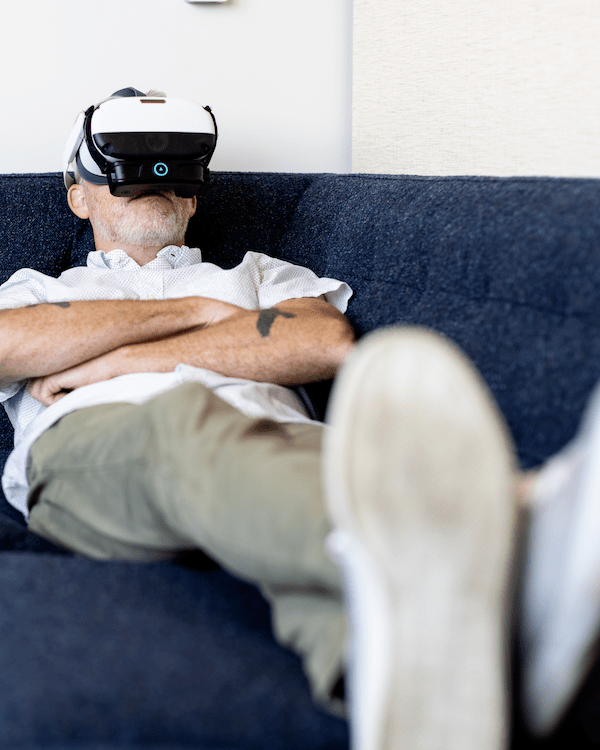
It’s no secret that meditation is good for our overall health and wellbeing. Meditation has the potential to help ease anxiety and depression, relieve chronic pain, improve sleep quality, reduce migraine severity, and more, according to the Mayo Clinic. Mindfulness meditation can actually change the physical structure in our brains to improve emotional regulation, increase self awareness, and even reduce stress, per additional research published in the journal Nature.
But for people who have a hard time focusing, mindfulness meditation (aka silent meditation) can feel nearly impossible. So, what gives? Thankfully, there’s another approach that may help those who struggle to stay present or in the moment—but still offers some of the same health-boosting benefits. Guided meditation—or a type of meditation led by a narrator or teacher—quite literally guides you through the mindfulness or relaxation process. Think of it like a driver's ed instructor teaching you how to operate a vehicle versus trying to drive on your own for the first time.
But does that analogy mean then that guided meditation is the more effective route?
Which Is Better: Mindfulness Meditation or Guided Meditation?
Research shows that both mindfulness meditation and guided meditation offer many of the same health benefits, from decreased mind-wandering to reduced anxiety. While there’s no such thing as a “good” or “bad” meditation practice, the best type of meditation is the one you’ll actually do—and enjoy.
If you can dedicate some time to practice mindfulness meditation without any distractions, that’s great (and we’re a little bit jealous). But the reality is that most of us live in a world full of interruptions. Research estimates that, on average, we’re distracted every 8 minutes—that translates to nearly 60 interruptions a day! These interruptions can make a mindfulness meditation practice feel unattainable, which is where guided meditation or VR meditation could come in handy.
What Is Virtual Reality (VR) Guided Meditation?
Virtual reality (VR) guided meditation essentially works the same way horse blinders do—it blocks out all distractions to help you stay present. For example, when you’re wearing a VR headset, you can’t focus on your messy kitchen or get distracted by notifications on your phone because you can’t physically see or hear them.
With VR guided meditation, while a narrator guides you through a meditation, you are also fully immersed in a computer-generated world full of soothing scenes and sounds. When guided meditation engages multiple senses through VR, it becomes even more immersive (and effective) for the user. This is where Inhale by OVR Technology really shines: adding olfaction-based intervention to your guided meditation levels-up your meditation experience for that much more of a relaxation and stress relief effect.
By engaging multiple senses through VR, guided meditation can become even more immersive and engaging for the user. The good news? Research shows that any type of meditation you do—whether it’s self-guided or through technology such as VR—can help you reap the health benefits.
Overall, mindfulness meditation and guided meditation both offer similar benefits. However, it may be easier for some folks to turn to guided meditation—especially if they’re just starting a meditation practice—because guided VR meditation can help remove distractions from the outside world and create a more immersive experience.




